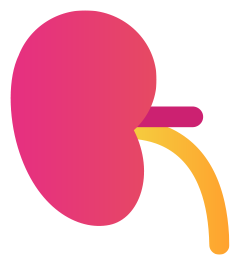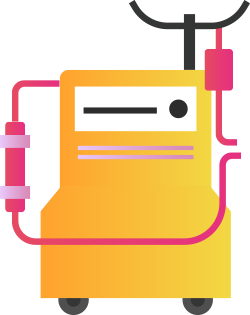
More than two million people worldwide are being treated for end-stage renal disease (ESRD), and treatment models and access to treatment widely differ. Here’s what to know about ESRD treatment modalities around the world, patient survival rates and more.


Kidney Disease in the U.S.
661,000
Americans
have kidney failure and of these, 468,000 are receiving dialysis.
37 million
people
have chronic kidney disease (CKD) and 9 out of 10 of these people don’t know they have the condition.
highest
in the world
American rates for kidney failure are among the highest in the world and continue to increase.
$114
billion
Medicare spent $114 billion on ESRD and CKD treatment in 2018
most common cause of death
The most common cause of death in ESRD patients is sudden cardiac death
Top 5 States with the Highest Incidence of Kidney Disease
- Alabama
- Mississippi
- Tennessee
- Georgia
- North Carolina


Treatment
80 of U.S. dialysis patients begin treatment with a catheter
Compared to 23% of dialysis patients in Europe


Transplant Rates:
U.S. versus Europe
30% of ESRD patients in the US receive kidney transplantation compared to:
- More than 60% in Norway and Iceland
- Less than 5%-10% in some Asian and Eastern European countries
Countries with the highest transplant rates also have the lowest incidence of ESRD.
Pre-emptive Transplant
- A pre-emptive transplant increases quality of life and allows patients to live longer.
- 1%-2% of U.S. patients receive a pre-emptive kidney transplant compared to up to 40% in the UK

Home Dialysis
45%
of ESRD patients in Hong Kong receive home dialysis
23%-31%
of patients in New Zealand, Colombia, Thailand, and the Jalisco region of Mexico receive home dialysis
3-6%
of dialysis patients in Canada, Denmark, Finland, the Netherlands, Sweden, the United Kingdom, and Scotland receive home dialysis
<2%
less than 2% of ESRD patients in the US receive home dialysis
In-Center
The majority of ESRD patients around the world receive dialysis treatment in-center
In Japan, in-center dialysis is favored over home dialysis because centers are easily accessible (near public transportation) and kidney donation rates are low.

Vascular Access Usage
Patients with arteriovenous fistula
91%
Japan
69%
Europe
68%
U.S.
Patients with CVC
45%
Canada
38%
Belgium
Pre-dialysis Education
Patients who receive pre-dialysis care
70%
Japan
76%
Europe
69%
U.S.
Patients with AV fistula at dialysis initiation
84%
Japan
50%
Europe
28%
U.S.


Survival Rates
The death rates among U.S. dialysis patients are no longer decreasing.
- Unadjusted five-year survival was 60% in Japan, 39% in the U.S., and 41% in Europe for patients starting dialysis, and unadjusted five-year survival was 52% in Malaysia and 44% in Taiwan.
- Unadjusted five-year survival was 52% in Malaysia and 44% in Taiwan.
- Survival rates for ESRD are higher in Europe than the U.S. This could be explained by the inferiority of national standards of care, a higher prevalence of patients with diabetes and differences in practice patterns.
- Survival rates in Japan and other east Asian countries substantially exceeds other countries. This could be because of lower background mortality and fewer transplant recipients in these countries.

